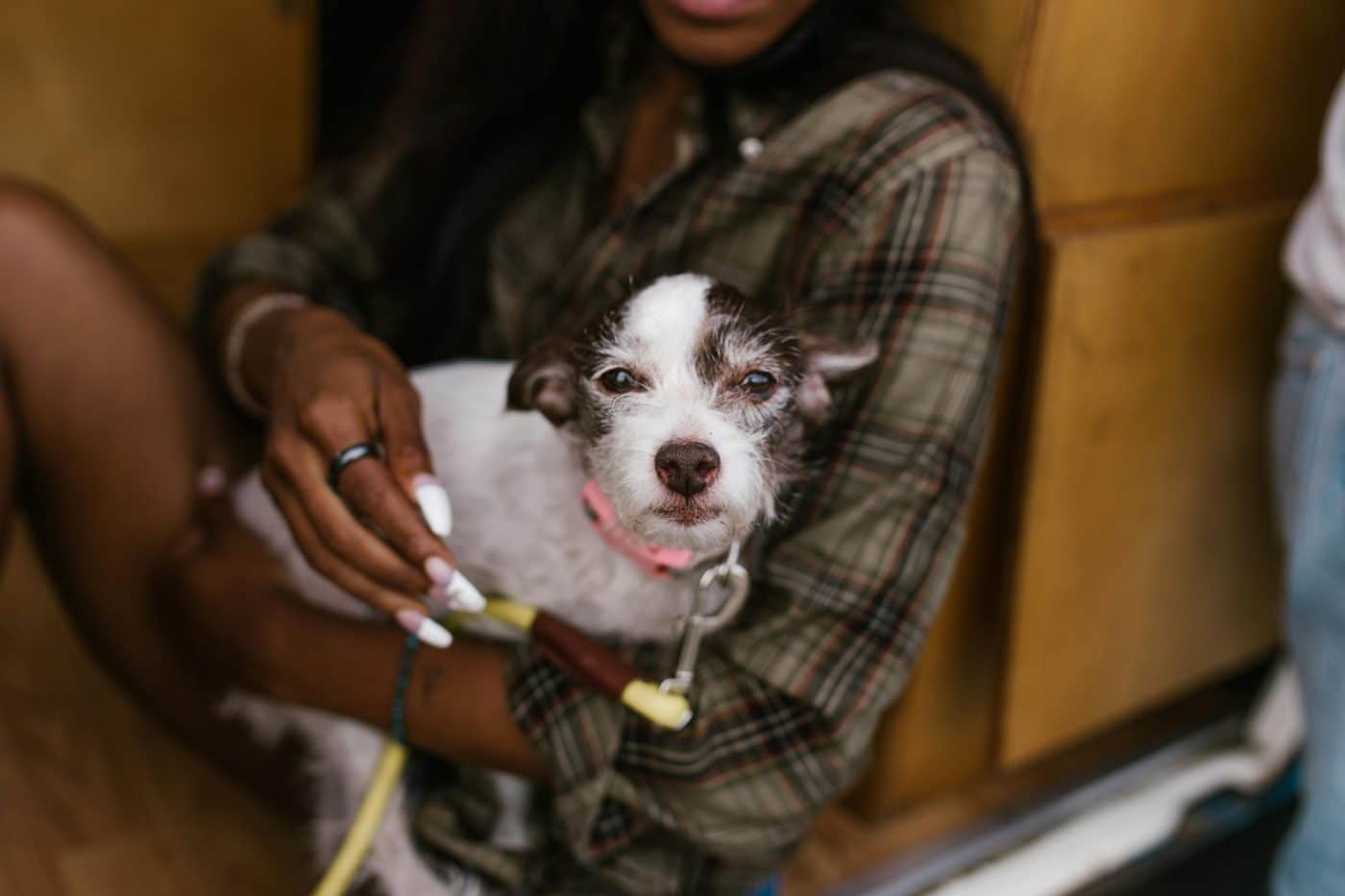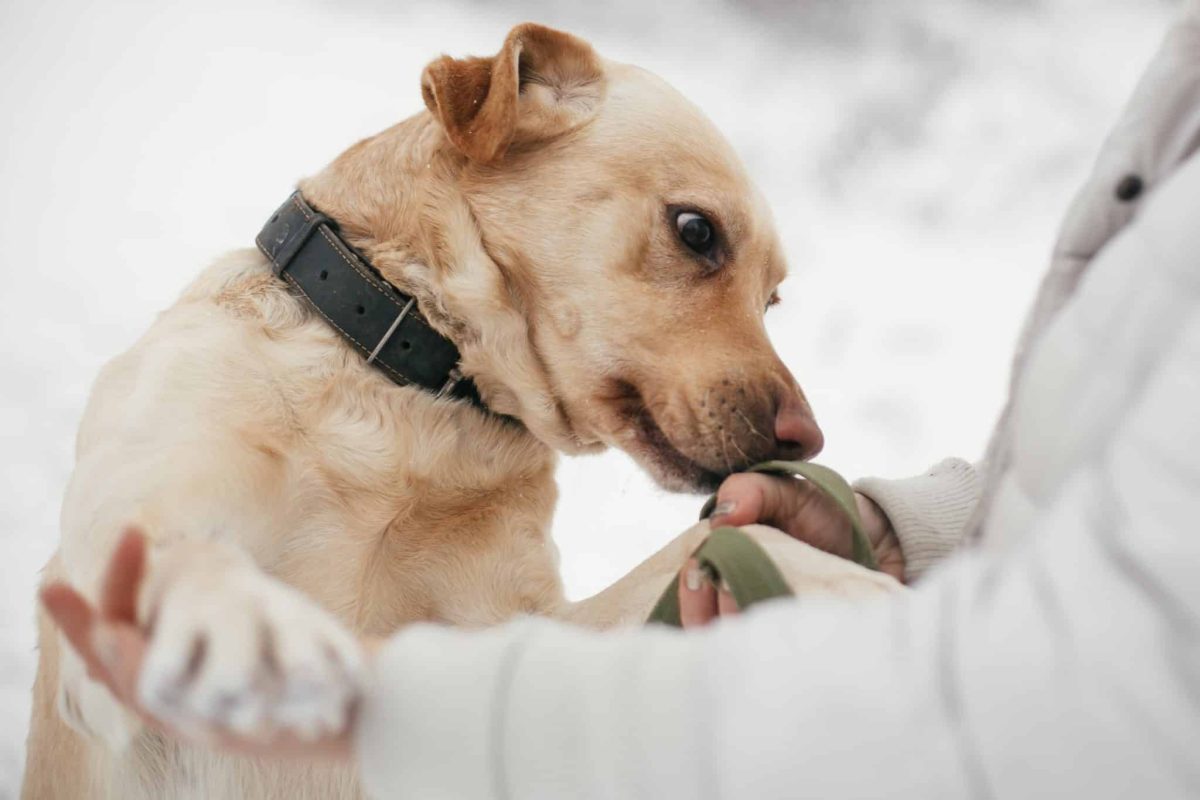 Shutterstock
Shutterstock
Dogs are known for being loyal, loving companions, and they often rely on us to understand their needs. But when they’re in pain, they can’t speak to us directly, so they use body language, vocalizations, and behavioral changes to communicate what they’re feeling. As a pet owner, it’s important to be aware of these signs so you can provide your dog with the care they need. Knowing how to interpret these subtle cues will help ensure your furry friend stays comfortable and healthy.
Changes in Behavior
 Shutterstock
Shutterstock
When your dog is in pain, you may notice changes in their behavior. They might become more withdrawn or display signs of irritability. This change could be due to the discomfort they’re feeling and their inability to express it in the same way humans can. They may avoid interaction or seem disinterested in activities they usually enjoy, such as playing or going for walks.
Limping or Difficulty Moving
 Shutterstock
Shutterstock
One of the most common signs that your dog is in pain is limping or difficulty moving. If your dog starts favoring one leg, has trouble getting up, or hesitates to walk, it could indicate joint, muscle, or bone pain. If your dog is reluctant to run, jump, or climb stairs, this may be another sign that they are experiencing discomfort in their legs, back, or hips. Pay attention to these behavioral changes, as they often point to injury or joint issues like arthritis.
Excessive Licking or Chewing
 Shutterstock
Shutterstock
Dogs may lick or chew areas of their bodies that are in pain as a way to soothe the discomfort. If you notice your dog obsessively licking a specific area, especially the paws or joints, it could be a sign that they are experiencing pain. This behavior may also be accompanied by redness, swelling, or heat in the affected area. Persistent licking may also indicate that the area is injured or irritated, and seeking veterinary care may be necessary.
Whining, Whimpering, or Growling
 Shutterstock
Shutterstock
When dogs are in pain, they often use vocalizations to express their discomfort. Whining, whimpering, and even growling are common signs that something isn’t right. If your dog begins to make more noise than usual, particularly when they’re moving or when you touch certain parts of their body, it could indicate pain. Some dogs might even growl to protect themselves from being touched in areas that hurt, signaling to you that they are feeling vulnerable.
Changes in Appetite
 Shutterstock
Shutterstock
Pain can have a noticeable impact on your dog’s appetite. If your dog suddenly refuses to eat or drink, it could be because of pain. When they are uncomfortable, dogs often experience nausea, which can make eating unpleasant. A decrease in appetite or reluctance to eat is often a sign that something is wrong and that your dog may need medical attention to address their discomfort.
Excessive Panting
 Shutterstock
Shutterstock
Panting is a normal response for dogs, especially when they’re hot or excited. However, if your dog starts panting excessively without a clear cause, like exercise, it could indicate pain. Dogs pant to regulate their body temperature, but they also do so when feeling anxious, stressed, or in physical discomfort. If your dog is panting heavily while resting or after minimal activity, it’s important to pay attention to other signs to determine if pain is the cause.
Aggression or Increased Irritability
 Shutterstock
Shutterstock
Pain can lead to increased irritability or aggression in dogs. If your dog becomes more easily agitated or even snaps at you, it could be a result of pain. A normally calm dog may act out defensively when they’re hurting, making them less tolerant of being touched or handled. These behavioral changes are important to note because they can indicate that your dog is trying to protect themselves from further discomfort.
Shaking or Trembling
 Shutterstock
Shutterstock
Shaking or trembling can be a clear indicator of pain in dogs. If your dog begins to tremble or shake, especially after activity or while resting, it might be due to physical pain. Dogs may tremble as a response to stress or discomfort, especially if they are experiencing muscle or joint pain. Shaking can also be associated with fever or internal pain, and if it persists, seeking veterinary help is essential.
 Shutterstock
Shutterstock
When dogs are in pain, they may avoid eye contact as a sign of vulnerability. Normally, dogs engage with their owners through eye contact, but pain can make them retreat. A dog in pain may avert their gaze to avoid feeling threatened or to communicate that they’re not comfortable. If your dog is acting distant or avoiding your gaze, it could indicate that they’re not feeling well.
Changing Sleeping Habits
 Shutterstock
Shutterstock
Pain can affect a dog’s sleep patterns. If your dog suddenly starts avoiding their usual sleeping spots or seems restless at night, it may be due to discomfort. Dogs with pain may find it hard to settle down or may shift positions frequently, trying to find a comfortable position. An increase in nighttime restlessness could indicate that your dog is struggling with physical discomfort or pain that needs attention.
Hiding or Seeking Solitude
 Shutterstock
Shutterstock
When a dog is in pain, they may seek solitude or hide away from others. This behavior is often a natural response to feeling unwell, as dogs instinctively protect themselves when vulnerable. If your dog, who is usually social, begins to hide or withdraw to a quiet corner, it might be because they are experiencing pain. Dogs often retreat when they are feeling weak or under the weather, signaling the need for help.
Excessive Salivation or Drooling
 Shutterstock
Shutterstock
Excessive drooling or salivation can sometimes indicate that a dog is in pain. Pain in the mouth, stomach, or throat can lead to an increase in drooling. In some cases, excessive salivation may also be accompanied by other symptoms like vomiting or difficulty swallowing. If your dog is drooling more than usual, particularly with other signs of distress, it could be a sign that they are suffering from pain and need to be examined by a vet.
Sensitivity to Touch
 Shutterstock
Shutterstock
A dog that is in pain may become unusually sensitive to touch. If your dog flinches, pulls away, or growls when touched, it could indicate that they are in discomfort. Certain areas of the body, like the joints, legs, or abdomen, maybe more painful to touch, leading to these reactions. This heightened sensitivity can be a clear signal that your dog is dealing with pain, and you should avoid putting pressure on those areas until you can consult with a vet.
Lack of Interest in Favorite Activities
 Shutterstock
Shutterstock
When a dog is in pain, they may show disinterest in activities they typically love. For example, if your dog stops playing with toys, refuses to go on walks, or no longer shows interest in their favorite games, it could be a sign of pain. Dogs are usually very eager to participate in activities that bring them joy, so a sudden lack of enthusiasm should raise a red flag. Pain often causes dogs to withdraw from the things they once loved due to discomfort.
Excessive or Unusual Sleeping
 Shutterstock
Shutterstock
Dogs sleep a lot, but when they’re in pain, their sleeping patterns can change. Some dogs may sleep excessively to avoid moving or because their body is trying to heal. Conversely, dogs in pain may become restless during the night, tossing and turning or waking up frequently due to discomfort. If your dog seems to be sleeping more than usual or having trouble settling down, it might be their way of coping with pain. Unusual sleep patterns are often a sign that something isn’t right and should be monitored closely.
The Tail-Tale Signs They’re Hurting
 MidJourney
MidJourney
Watching your dog in pain is never easy, but recognizing the signs can help you provide them with the care they need. Dogs can’t verbally tell us when they’re hurting, so it’s up to us to understand their cues. By observing changes in behavior, body language, and sounds, you can act quickly to make them more comfortable. Dogs trust us to notice their discomfort and respond with compassion. So, the next time your pup gives you that sad, pitiful look, remember—they’re not just acting—they’re reaching out for help.

 1 month ago
21
1 month ago
21


















 English (US) ·
English (US) ·